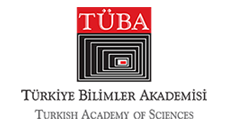Development of the Turkish Education Model for Immigrants for Global Transformations of Türkiye
Development of the Turkish Education Model for Immigrants for Global Transformations of Türkiye
In this study, an Immigrant Education Model which is specific to Türkiye has been developed. For this purpose, theory building design, one of the qualitative research designs, has been used for this research. In this design, new facts are tried to be reached as a result of systematic analysis of the data. When the migration movements taking place on a global scale and the migration movements towards Türkiye are compared, there are significant differences in terms of the characteristics of the migrating population. These differences may vary depending on the migrating population’s professional and language skills, economic situation, cultural dynamics, purpose of migration, etc. These differences limit the use of models that are applied in different countries in our country. Based on this problem universe, first of all, a comprehensive diagnostic study was carried out and the boundaries and nature of the training need have been tried to be revealed. This diagnostic study provides important information about the systematics of immigrant integration at existing levels in the education and training system. The theoretical structure of a gradual transition system will be put forward to identify groups that have a demand for education but they have significant differences from the current population and it is difficult to adapt them to the system with intermediate degrees. With the development of this education model, an alternative structure to existing applications has been proposed. As a result of the studies to be carried out in the problem areas determined by the diagnostic study, the goal of “immigrants that can be integrated into the country’s education system” was tried to be achieved. People who have been identified as not being able to reach the knowledge and skill criteria required by the education levels will be tried to be directed to the agriculture, animal husbandry or forestry sectors in a structure similar to a vocational guidance activity accepted all over the world. In this way, immigrants will be able to look to the future with more confidence as registered and educated people. Thanks to the information in the data pool, the migrated country will be able to make data-based strategic decisions, prevent the uncontrolled structure resulting from unregistered work, and use public resources more efficiently and scientifically. One of the results of the proposed education model is to develop a sense of belonging as working and producing immigrants and to achieve a culture of living together with the local people within the framework of the law and as a result of sharing common living spaces.
Click to cite.
Note: You can access the citation text via the ‘Actions’ tab in Crossref.
